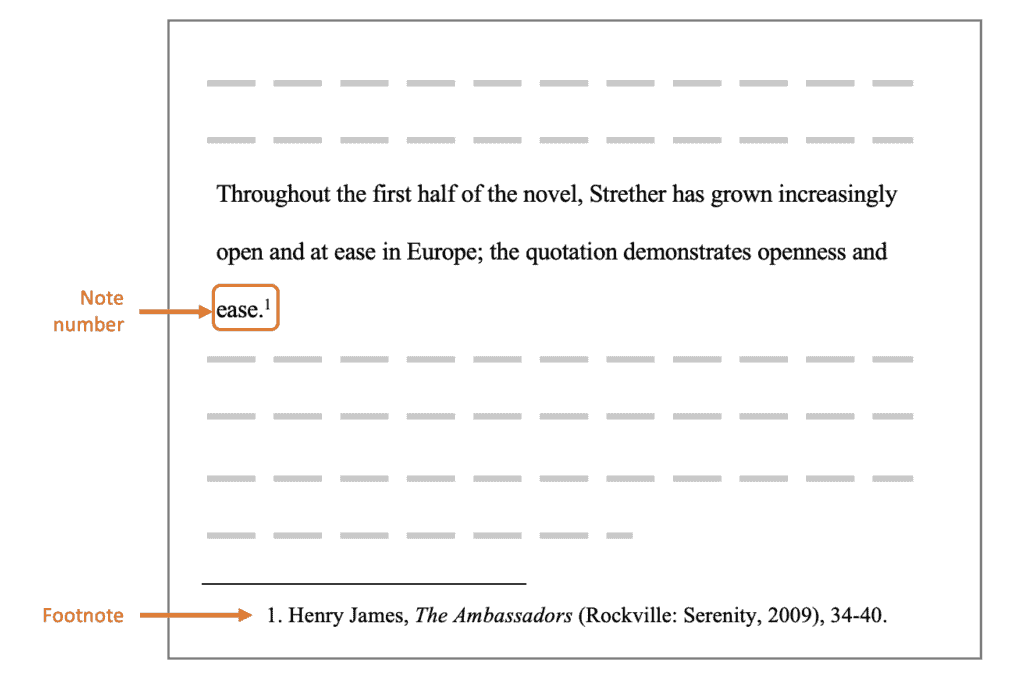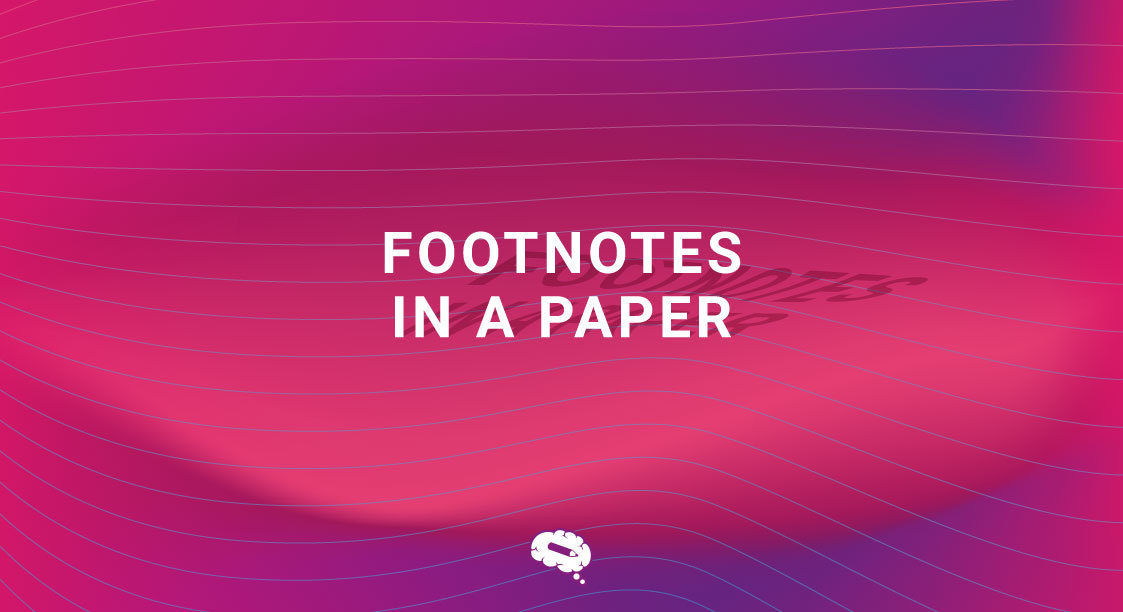Footnotes in a paper can be a valuable tool in providing a way to supplement our writing with additional information, citations, and explanations without disrupting the flow of the main text. However, many writers may be unsure of when and how to use footnotes effectively. In this article, we will explore the importance and usage of footnotes in academic writing, and provide practical tips for incorporating footnotes into your own writing. Whether you are a seasoned academic writer or just starting out, understanding how to use footnotes can help you increase the clarity and credibility of your writing.
What Are Footnotes?
Footnotes are a useful tool in academic writing that allows for the inclusion of additional information or comments in a document or text. Typically denoted by a small number or symbol in the main text, footnotes in a paper appear at the bottom of the page and can serve a variety of purposes. For example, footnotes can be used to clarify a point, provide background information, or give credit to a source that is not directly quoted or referenced in the main text. They are also helpful in avoiding disruptions to the flow of the main text, particularly when lengthy citations or explanations are required. In short, footnotes provide readers with additional information or references related to specific sections of the text, making them a valuable tool for researchers.

How to Write a Footnote
To write a footnote for a paper, follow these general steps:
- Determine what information needs to be included in the footnote. This may include the author’s name, the title of the source, the publication date, the publisher, and the page number(s) you are referencing.
- Place the footnote number or symbol at the end of the sentence or clause that requires the footnote. The footnote number or symbol should be placed after the punctuation, such as a period or comma.
- Write the footnote itself at the bottom of the page. The first line of the footnote should be indented, and the subsequent lines should be flush with the left margin.
- Format the footnote according to the citation style you are using (e.g. MLA, APA, Chicago). Each citation style has specific rules for how footnotes should be formatted, so consult the appropriate style guide for details.
- If you are using a word processing program, such as Microsoft Word, you can use the “Insert Footnote” function to automatically insert footnotes and format them correctly.
Difference Between Footnotes and Endnotes
The main difference between footnotes and endnotes is their placement within a document. Footnotes appear at the bottom of the page on which they are referenced, while endnotes appear at the end of a document, chapter, or section.
Here are some other differences between footnotes and endnotes:
| Footnotes | Endnotes | |
|---|---|---|
| Definition | Notes placed at the bottom of the same page as the reference. | Notes placed at the end of the document. |
| Placement | Below the text they reference, usually in smaller font sizes. | At the end of the document, usually in the same font size as the main text. |
| Usage | Used to provide additional information or explanation of a point in the text. | Used to provide additional information, explanation, or citation of a source. |
| Advantages | Easy to locate and read in the context of the text. | Keep the text clean and uncluttered. |
| Disadvantages | May clutter the page and distract the reader. | May require the reader to flip back and forth between the text and the endnotes. |
Chicago Style Footnotes
Chicago-style footnotes are a common citation style used in research papers. In this format, footnotes are used to provide information about a source within the text. There are two types of Chicago-style footnotes: short form and long form. Short form citations include only the basic details of a source if a full bibliography is provided, while long form citations include a full citation the first time a source is cited, with subsequent citations using the short form.
Here is an example of a Chicago-style footnote using the short form:
“The concept of social capital has been widely discussed in recent years, with Putnam’s Bowling Alone¹ being one of the most influential works in the field.”
At the bottom of the page, the corresponding footnote would appear as:
¹ Putnam, Bowling Alone, 26.
Note that the author’s last name is listed first, followed by the abbreviated title of the work (in this case, “Bowling Alone”), and the page number where the information was found.
Here is a Chicago-style footnote using the short form example:
First reference:
John Smith, The History of Chicago (Chicago: University of Chicago Press, 2005), 25.
Subsequent reference:
Smith, The History of Chicago, 30.
Here is an example of a Chicago footnote in text:
“According to Smith, the notion of human rights can be traced back to ancient Greek philosophy.¹”²
Bottom of page:
¹John Smith, The Origins of Human Rights (New York: Oxford University Press, 2021), 15.
²Smith, Origins of Human Rights, 22.
Learn how to make citations in Chicago style in our blog “Chicago Style Citation Made Easy: Formatting and Examples“.
APA Style Footnotes
APA format generally uses parenthetical in-text citations instead of footnotes. However, there are two exceptions to this rule: content footnotes and copyright attribution. Content footnotes provide additional information on a single topic that does not fit coherently in the text, while copyright attribution footnotes are used when a writer uses a lengthy quotation or other copyrighted material, such as a stock photograph. Footnotes are formatted similarly to Chicago style, with sequential superscript numbers coming after the passage and the corresponding footnote at the bottom of the page.
Here’s an example of an APA-style footnote for supplementary information:
In-text:
According to recent studies, the COVID-19 vaccine is highly effective in preventing infection and transmission of the virus.¹
Footnote:
¹For more information on the studies cited, see Smith et al. (2021) and Jones et al. (2022).
Learn how to make citations in APA style in our blog “How to Make Citations using APA Formatting: A Guide“.
MLA Style Footnotes
MLA (Modern Language Association) style does not typically use footnotes. Instead, in-text citations are used to indicate the source of information or quotations. However, if footnotes are required for a specific publication or assignment, the following guidelines can be followed:
Placement: Footnotes should be placed at the bottom of the page on which the reference appears.
Numbering: Footnotes should be numbered consecutively throughout the paper using Arabic numerals. The number should be placed after any punctuation marks, such as periods or commas.
Formatting: Footnotes should be single-spaced and in a smaller font size than the main text.
Content: Footnotes should include bibliographic information for the source being cited, as well as any additional information necessary to clarify the reference. For example, a footnote for a book might include the author, title, publisher, and year of publication, while a footnote for a website might include the URL and date of access.
Example of MLA Style Footnote for a book:
John Doe, The History of Art (New York: Penguin Books, 2000), 24.
Example of MLA Style Footnote for a website:
“The Benefits of Exercise,” National Institutes of Health, accessed May 15, 2023, https://www.nih.gov/health-information/benefits-exercise.
A MLA Style footnote text example:
Text: According to a recent study, the use of social media can have negative effects on mental health (Johnson 36).²
Footnote citation: ² Johnson, Sarah. “The Impact of Social Media on Mental Health.” Journal of Health Psychology, vol. 22, no. 1, 2018, pp. 35-44.
Learn how to make citations in MLA style in our blog “A Writer’s Guide to MLA Format: How to Get It Right“.
Improve your papers’ impact and visibility through quality visual communication
Mind the Graph is an innovative platform that provides a wide range of tools to help scientists improve their papers’ impact and visibility through quality visual communication. With Mind the Graph, scientists can easily create graphical abstracts, posters, and other visual aids that can effectively communicate their research findings to a wider audience.

Subscribe to our newsletter
Exclusive high quality content about effective visual
communication in science.






